From the crown of India with its gorgeous vistas of Jammu & Kashmir and Leh Ladakh…to the painterly towns of Shekhawati, from Nathu La in Sikkim…to Arikamedu near Pondicherry in the south, a host of cultural treasures wing us back our links with the heyday of the legendary Silk Route.
The mystique surrounding the ancient Silk Route connecting China to Rome inevitably summons up visions of romance and mystery evoked by the tales of the exotic, of the unknown, of distant lands explored by traders and adventurers.
Spanning an expanse of a little less than 12,000 km in length the historic Silk Route dates back to 200 BCE until the c 14th CE. Spiralling out from China's Yellow River valley in the east it reached out to the many lands of the Roman Empire, having traversed through Central Asia, Persia, Turkey, Northern India, and the Mediterranean region. In the mid-15th century, the Ottoman Empire closed off trade with the West.
It’s interesting to note that the Silk Route developed through several phases over the centuries; an important part of the Silk Route was its maritime section which connected China, Southeast Asia, the Indian subcontinent, the Arabian Peninsula, Somalia, Egypt, and Europe at various points in history.
This interconnectedness between Asia and Europe served as an incredible corridor not just for trade and commerce alone, but for ideas and culture as well.
Travelling these great distances between the two regions were caravans transporting not only Chinese silk but all manner of exotic, high-value goods such as Chinese ceramics, and textiles and spices from India and, precious metals like gold and silver from Europe etc. Even while following this historic route, the caravans would oftentimes cut away to create newer branches to the destinations they wished to explore along the way.
The great Silk Route which also helped move tea, herbal medicines, foods, fruits, flowers, even musical instruments, and horses, also served as an important passageway for emissaries, missionaries, monks, artists and artisans, and itinerant adventurers.
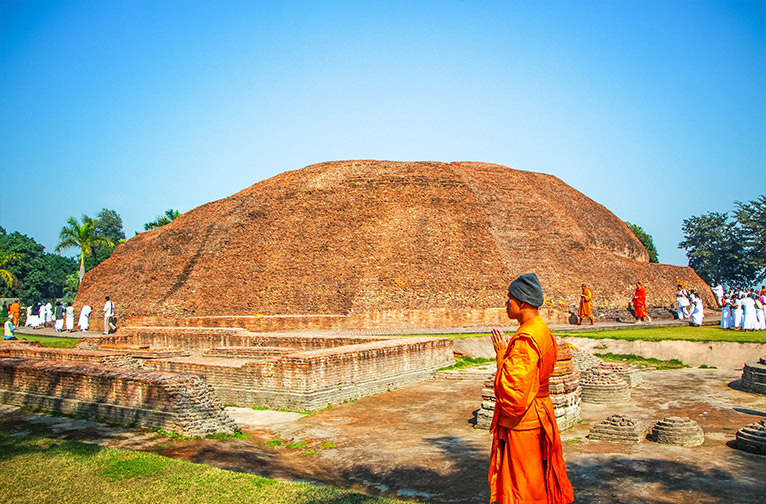
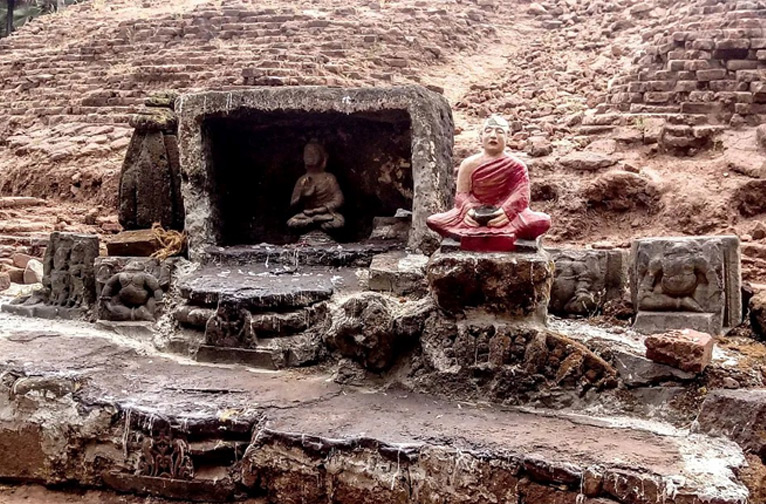
While the Silk Route, linking Europe, Africa and Asia in ancient and medieval times, was an important channel for India for trade and commerce, it also served as a critical highway for cultural and religious exchange. This transnational highway was highly instrumental in the expansion of Buddhism from India through Central Asia to Tibet, China, and Japan in several directions through intersecting points. It was the great king Kanishka of the Kushan kingdom and a great proponent of Buddhism, who is believed to have opened up northern India to the connection with the ancient Silk Route. Kanishka’s kingdom is said to have extended as far east as the middle Ganges plain to the Varanasi region. These linkages also opened up India’s connection with the Arabs.
UNESCO has identified several important cultural treasures on India’s ancient caravan trails on the Silk Route. These sites are on the tentative list of UNESCO World Heritage Sites. The ancient Silk Road covered seven main states – Bihar, Jammu and Kashmir, Maharashtra, Puducherry, Punjab, Tamil Nadu, and Uttar Pradesh/Uttarkhand. The 12 cultural sites connected to the Silk Route are: Arikamedu (Puducherry); Excavated Remains of Kaveripattinam (Tamil Nadu); Ruins of Ancient Vaishali (Bihar); Remains of Vikramshila University (Bihar); Buddhist remains of Kushinagar, Kaushambi, Sravasti Ahichhatra all of which lie in Uttar Pradesh; an ancient site and Buddhist stupa in Sanghol (Punjab); an ancient monastery and stupa at Harwan (Jammu & Kashmir); Indraprastha/ Old Fort (Delhi) and Burud Kot (Maharashtra).
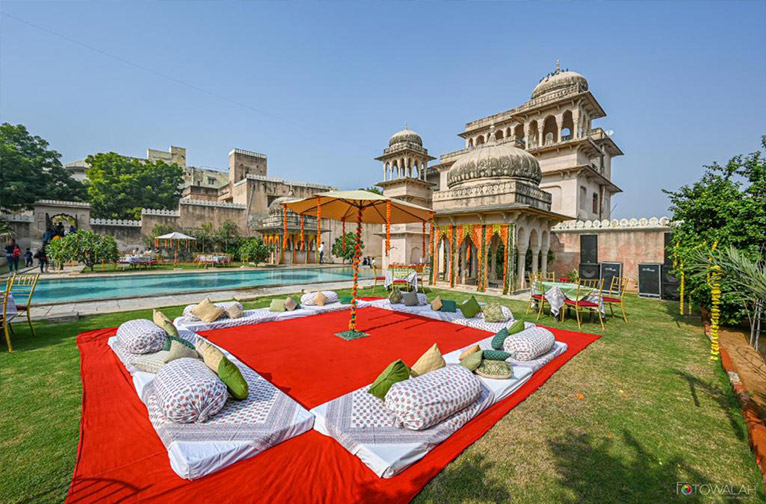
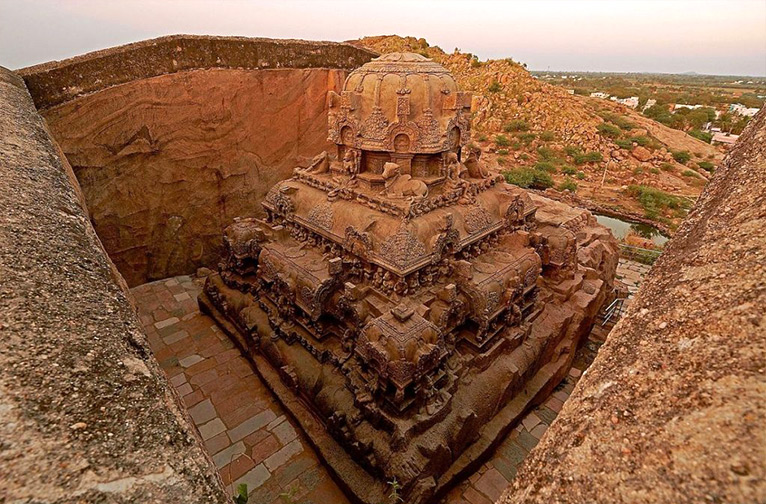
In the trans-Himalayan region trade continued to flow till about the mid-1900s, despite the intervention of the Ottamans in the 15th century. Leh, now the capital of the Union Territory of Ladakh, was a bustling trading outpost connected to Yarkhand, the gateway to Central Asia, at the tri-junction of China, India, and Pakistan. This was the Southern route from the Himalayan towns of Leh and Srinagar. The route was pierced by six passes (from the Uttarakhand Himalaya and those from Lahul and Spiti) connecting with the Leh-Lhasa Road.
Leh was also an important Buddhist centre, famed for its beautiful monasteries and cultural richness. The Leh Palace dates back to the 1600s. Abou 40 km from Leh town lies the famous Hemis Monastery established in the 1630s by Stag Tsang Raspa. You can enjoy the grand spectacle of cultural splendour of cham dances and the unveiling of the three-centuries-old silk thangka painting on public display only every 12 years. Alchi Gompa dates back to the 11th century by the revered Tibetan translator Rinchen Zangpo. He also commissioned Kashmiri artisans to create the world-renowned wall murals and the carvings in the monastery.
While trekking through Ladakh’s Nubra Valley you’ll be bound to encounter the double-humped Bactrian camels in the Hunder and Sumur dunes. These are descendants of the livestock left behind by the Central Asian traders when the caravans stopped operating here with the closing of the trade route. Those traders also left behind some of their culinary influences which have married nicely with local Ladakhi fare.
Rajasthan’s Shekhawati region, renowned for being the home turf of some of India’s most illustrious industrial and business luminaries, was established by the rebel Maharao Shekha who refused to (c.1433–1488 CE) kowtow to Amer's (Jaipur) Kachhawaha rulers.
The region, covering the present-day districts of Sikar, Jhunjhunu, and Churu districts, served as a link between the trading outposts between Agra and Delhi with Surat as well as other places across Gujarat. The Silk Route became an important revenue earner for the merchant princes from the region-¬ the Goenkas, Poddars, Ruias, Birlas, Jhunjhunwalas, Khaitans, Oswals, Piramals, Singhanias, etc, who were quick to cash in the low tax rate which attracted the caravan trade of opium, cotton, silks, and spices along the Southern Silk Route that connected the Middle East, India and West Asia with China.
The rise of the British in India and the introduction of the railways rang the death knell for Shekhawati’s fortunes and spiralling prosperity from trade and commerce. By 1822 the merchants were compelled to leave home and follow where new business opportunities propelled them¬¬ — these were the British port cities of Kolkata and Mumbai, as well as Madras (Chennai) in the south. By the end of the 19th century, the merchants had turned their attention to establishing jute factories and cotton mills. Diving deeper still into what was turning into an industrial revolution, they took their chances in other areas such as tea and textiles, automobiles, and cement and steel. Over time money was being funnelled back to their hometowns by the merchants to commission grander havelis remarked for their murals and imported decorative blandishments, temples, schools and colleges, baolis, cenotaphs, and dharamshalas— all to proclaim their growing wealth and stature in society.
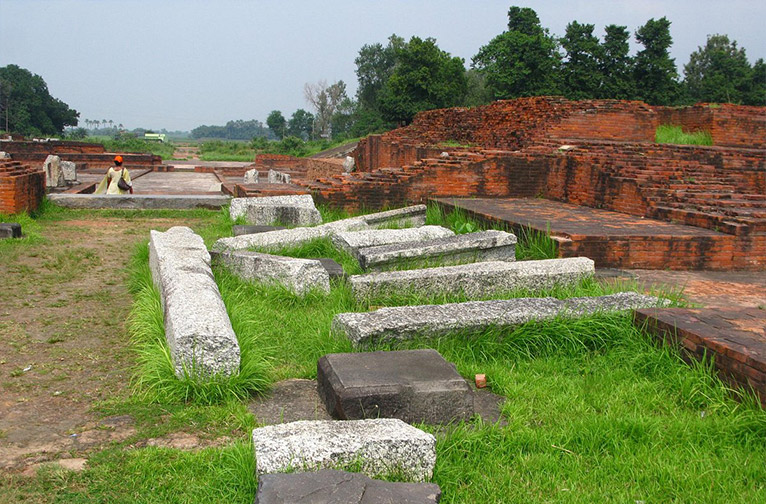
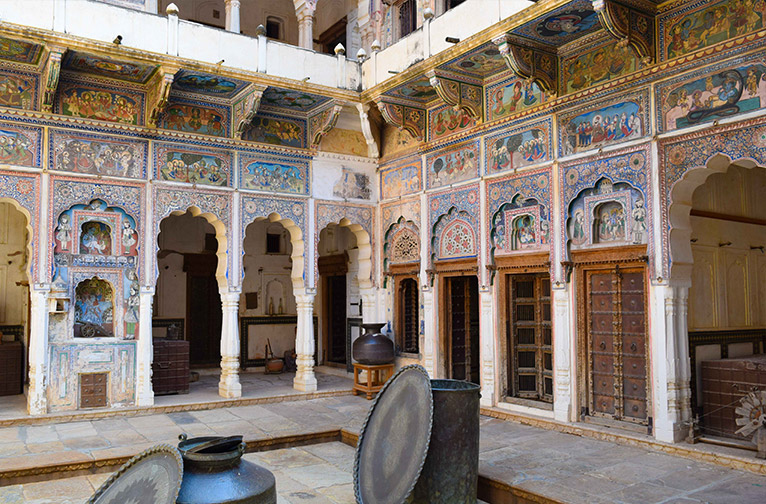
Today, visitors are blown away by the compelling frescoes in the havelis, the temples, and the cenotaphs, which have transformed Shekhawati into India’s most exciting open-air art gallery. Unmissable cultural treasures await in the string of townships filled with painterly delights. Check out Bagar’s Piramal haveli, Dundlod’s Goenka havelis, and Castle Mandawa. Also worth a leisurely exploration are Nawalgarh, Fatehpur, Jhunjhunu, Mukundgarh, and Bissau.
In South India, while exploring Pondicherry’s (Puducherry) exquisite cultural links with the French through its colonial history, drive out of town for about 4km to discover India’s ancient Italian connection in neigbouring Arakamedu, a Roman-era port, now an important archaeological site.
Gazing upon the ruins of Arakamedu you will still find traces of here the bridge between Roman/Greek and Indian architecture. Arikamedu. It might surprise you to discover this was a pivotal hub for trade between European countries and Rome during the 2nd century BCE to the c. 8th BCE. The site has yielded items such as amphorae (jars), glassware, gold, gems, stone beads, coins, lamps, etc. Arikamedu is also believed to be the world’s earliest known bead-making Indo-Pacific site.
Over 40 countries, scattered along the Silk Route's historic land and maritime passage, to this day, mirror those fabulous cross-cultural influences of traditions and customs of religion, art architecture, crafts, costumes, music, cuisine et al.
When planning to visit India again, do find time to explore some of the other spots where one can delve into the fascinating cross-cultural influences left behind by its old links with the legendary Silk Road.